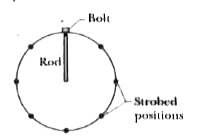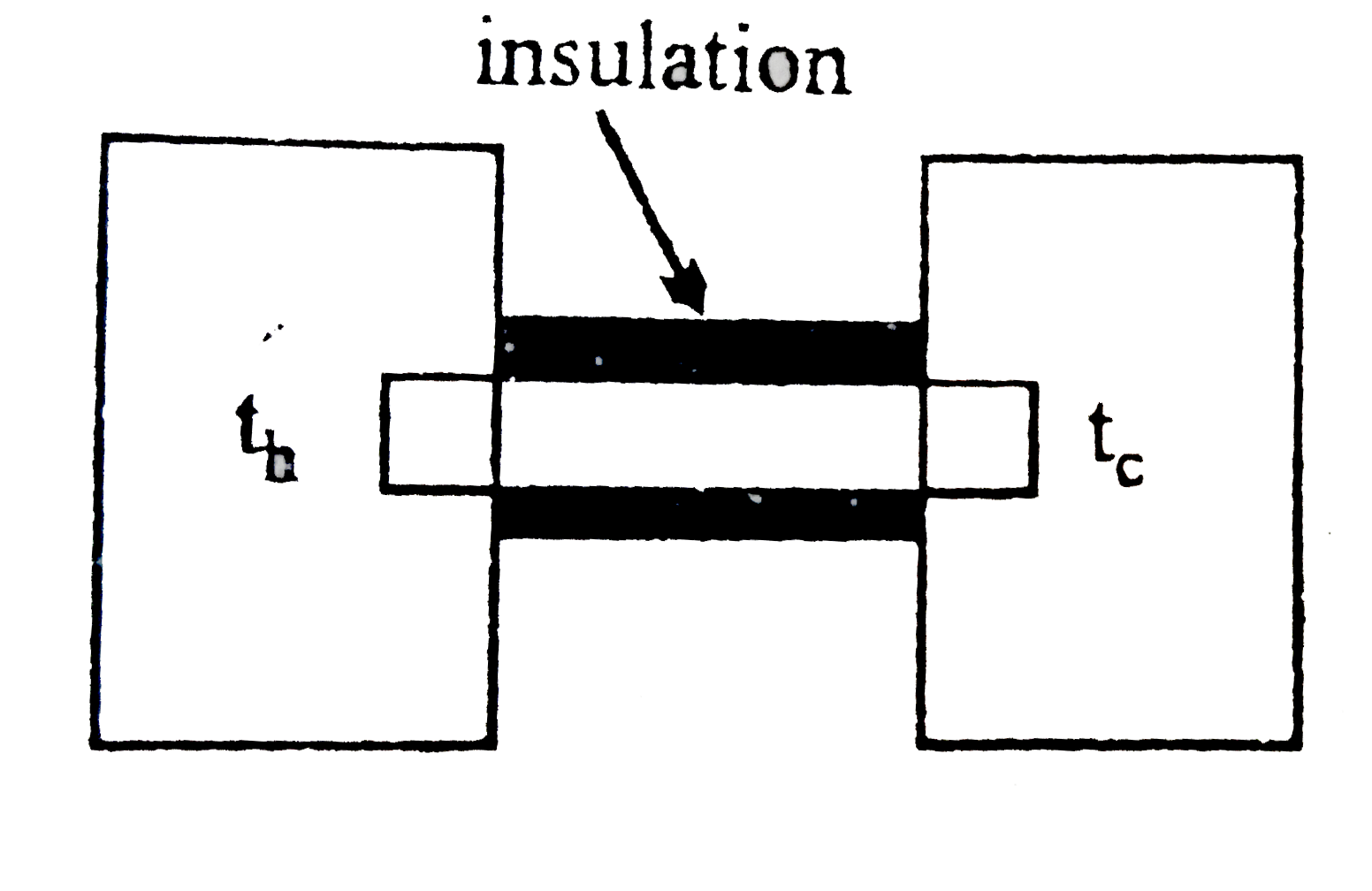A threaded rod with 12turns/cm and diameter 1.18cm is mounted horizontal. A bar with a threaded hole to match the rod is screwed onto the rod. The bar spins at 216rev/min. How long will it take for the bar to move 1.50cm along the rod ?
To solve the problem, we need to determine how long it will take for the bar to move 1.50 cm along the threaded rod. Here are the steps to find the solution:
Step 1: Understand the Threading of the Rod
The rod has a threading of 12 turns per centimeter. This means that for every 1 cm of the rod, there are 12 complete turns of the thread.
Step 2: Calculate the Number of Turns Needed to Move 1.50 cm
To find out how many turns are needed to move 1.50 cm along the rod, we can use the threading information:
Number of turns=Turns per cm×Length to move (cm)
Number of turns=12turns/cm×1.50cm=18turns
Step 3: Convert the Speed of the Bar from RPM to RPS
The bar spins at 216 revolutions per minute (RPM). To convert this to revolutions per second (RPS), we divide by 60:
Revolutions per second=216rev/min60s/min=3.6rev/s
Step 4: Calculate the Time to Complete 18 Turns
Now that we know the bar makes 3.6 revolutions per second, we can find out how long it takes to make 18 turns:
Time (s)=Number of turnsRevolutions per second=18turns3.6rev/s=5s
Final Answer
It will take 5 seconds for the bar to move 1.50 cm along the rod.
---
The rod has a threading of 12 turns per centimeter. This means that for every 1 cm of the rod, there are 12 complete turns of the thread.
To find out how many turns are needed to move 1.50 cm along the rod, we can use the threading information:
Number of turns=Turns per cm×Length to move (cm)
Number of turns=12turns/cm×1.50cm=18turns
The bar spins at 216 revolutions per minute (RPM). To convert this to revolutions per second (RPS), we divide by 60:
Revolutions per second=216rev/min60s/min=3.6rev/s
Now that we know the bar makes 3.6 revolutions per second, we can find out how long it takes to make 18 turns:
Time (s)=Number of turnsRevolutions per second=18turns3.6rev/s=5s
It will take 5 seconds for the bar to move 1.50 cm along the rod.
Topper's Solved these Questions
- BOOK - PRADEEPCHAPTER - SYSTEMS OF PARTICLES AND ROTATIONAL MOTIONEXERCISE - VALUE BASED QUESTIONS5videos
SYSTEMS OF PARTICLES AND ROTATIONAL MOTION
- BOOK - PRADEEPCHAPTER - SYSTEMS OF PARTICLES AND ROTATIONAL MOTIONEXERCISE - CURIOSITY QUESTIONS4videos
SYSTEMS OF PARTICLES AND ROTATIONAL MOTION
- BOOK - PRADEEPCHAPTER - SYSTEMS OF PARTICLES AND ROTATIONAL MOTIONEXERCISE - ADDITIONAL EXERCISES11videos
SYSTEMS OF PARTICLES AND ROTATIONAL MOTION
- BOOK - PRADEEPCHAPTER - RAY OPTICSEXERCISE - Problem For Practice(a)25videos
RAY OPTICS
- BOOK - PRADEEPCHAPTER - THERMODYNAMICSEXERCISE - Assertion- Reason Type Questions19videos
THERMODYNAMICS
Similar Questions
In the arrangement shown in fig the mass of the ball 1 is η=1.8 times as great as that of rod 2 The length of the later is l=100 cm The masses of the pulleys and the threads as well as the friction are negligible The ball is set on the same level as the lower end of the rod and then released How soon will the ball be opposite to the other end of the rod
 View Solution
View SolutionA bolt is threaded onto one end of a thin horizontal rod, and the rod is then rotated horizontally about its other end. An engineer monitors the motion by flashing a strobe lamp onto the rod and bolt, adjusting the strobe rate until the bolt appears to be in the same eight during each full rotation of the rod. The strobe rate is 2000 flashes per second, the bolt has mass 33 g and is at radius 4.0 cm. What is the magnitude of the force on the bolt from the rod?
 View Solution
View Solution
Knowledge Check
- Question 1 - Select One
An iron rod of length 20 cm and diameter 1 cm is placed inside a solenoid on which the number of turns is 600.The relative permeability of the rod is 1000.If a current of 0.5 A ios placed in the solenoid,then magnetisation of the rod will be
A2.997×102AmB2.9979×103AmC2.997×104AmD2.997×105Am - Question 2 - Select One
A copper rod of 1 cm diameter and 8 cm length is drawn into a wire of uniform diameter and 18 m length. The raidus (in cm) of the wire is
A115B130C215D15 - Question 3 - Select One
A brass rod of length 50cm and diameter 3.0cm is joined to a steel rod of the same length and diameter. What is the change in length of the combined rod at 250∘C, if the original length are at 40.0∘C?
(Coefficient of linear expansion of brass =2.0×10−5/∘C,steel=1.2×10−5/∘CA0.27cmB0.34cmC0.21cmD0.18cm
A copper rod of diameter 1 cm and length 8 cm is drawn in to a wire of length 18 m of uniform thickness. Find the thickness of wire.
View SolutionOne end of a cylindrical glass rod (mu = 1.5) of radius 1.0 cm is rounded in the shape of a hemisphere. The rod is immersed in water (mu= 4/3) and an object is placed in the water along the axis of the rod at a distance of 8.0 cm from the rounded edge. Locate the image of the object.
View SolutionA brass rod of length 50 cm and diameter 3.0 mm is joined to a steel rod of the same length and diameter. What is the change in length of the combined rod at 250∘C, if the original lengths are at 40.0∘C? Is there a 'thermal stress' developed at the junction ? The ends of the rod are free to expand. Coefficient of linear expansion of brass =2.0×10−5.∘C−1 and that of steel =1.2×10−5.∘C−1.
View SolutionAn insulated container is filled with a mixture of water and ice at tc=0∘C. Another container is filled with water that is continuously boiling at th=100∘C. In a series of experiments, the containers are connected by various thick rods that pass through the walls of the containers (see the diagram). The rod is insulated in such a way that there is no heat loss to surroundings. In experiment 1, a copper rod is used, and the ice melts in T1=2 min. In experiment 2, a steel rod of the same cross section is used, and the ice melts in T2=6 min. How long ( in min) would it take to melt the ice if the two rods are used "in series"?
 View Solution
View SolutionA copper rod of diameter 1 cm and length 8 cm is drawn into a wire of length 18 m of uniform thickness. Find the thickness of the wire.
View Solution

